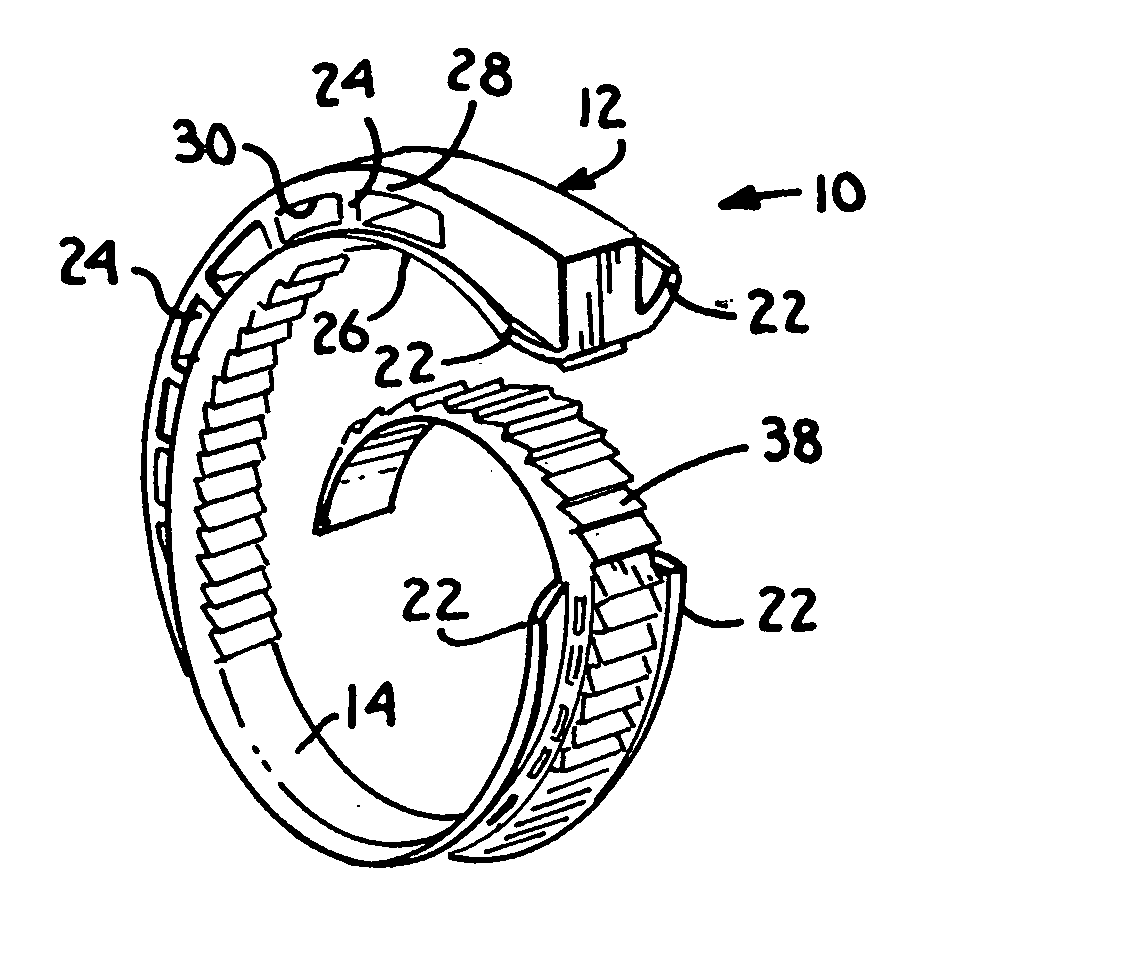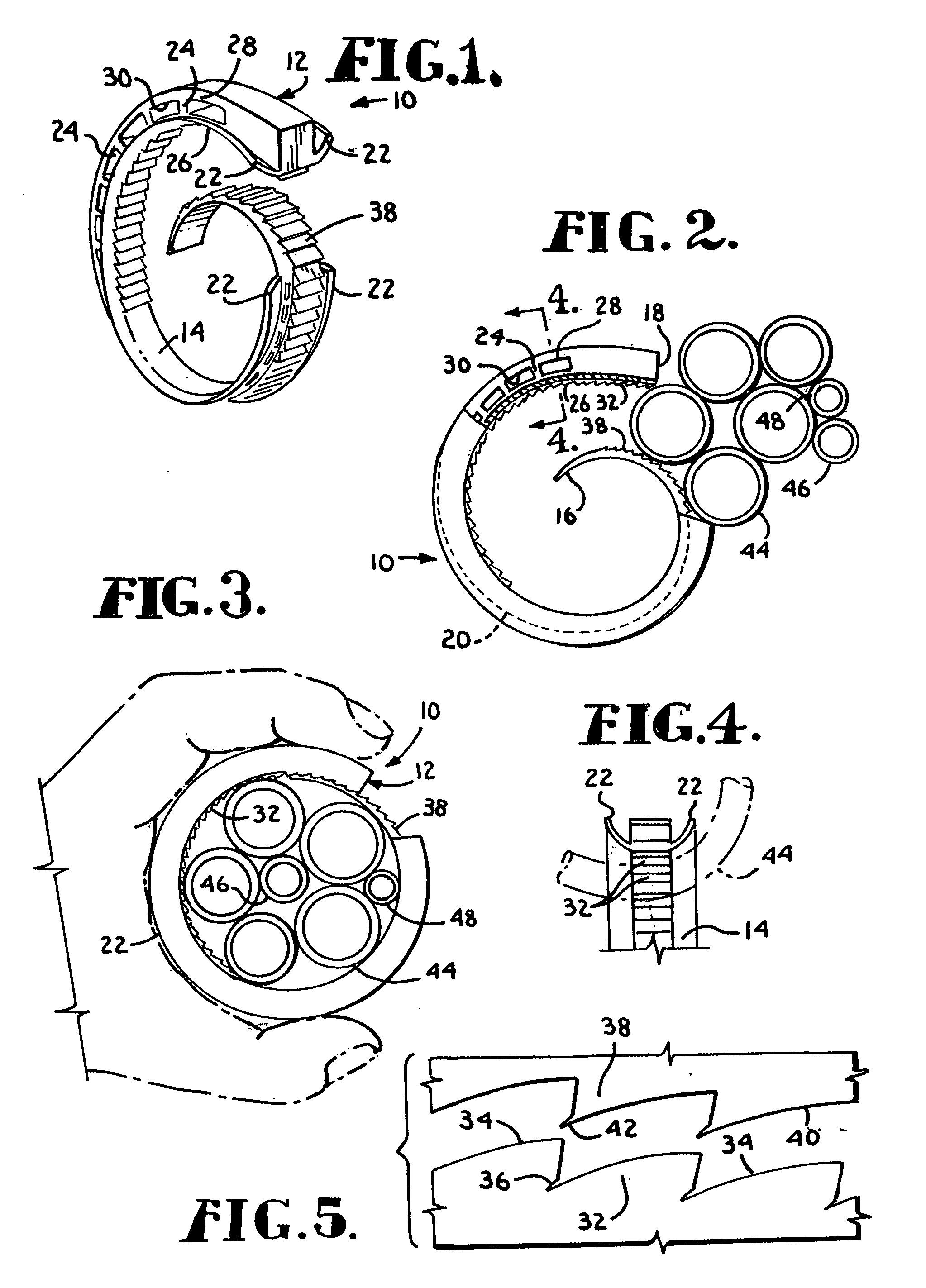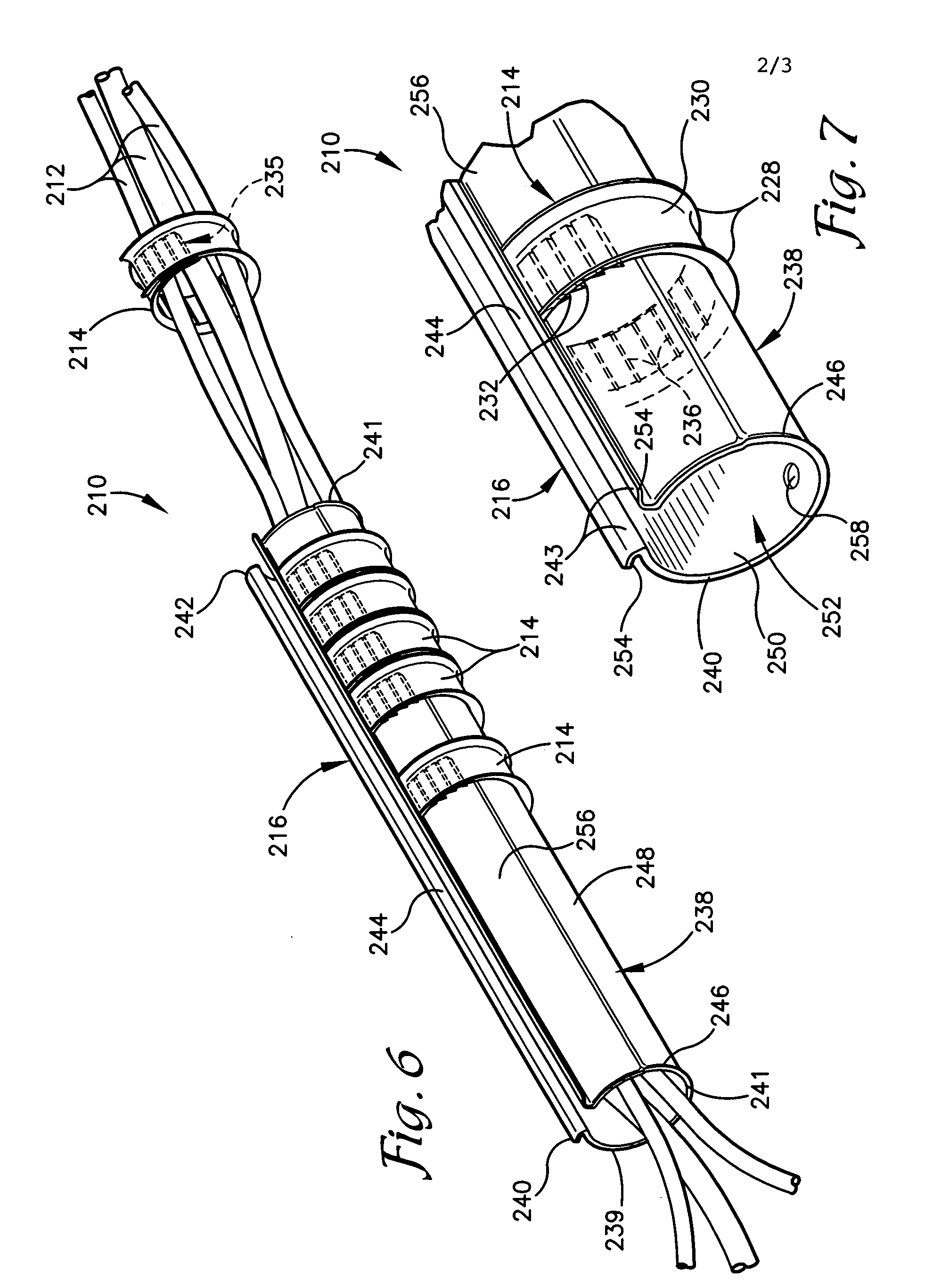Cable retention system
a technology of cable retention and cable, which is applied in the direction of hose connection, flexible element, packaging, etc., can solve the problems of reducing the flow rate of liquid or gas carried by the conduit, affecting the performance of the equipment being fed by the cable, and significant damage to the cable or the cable being secured
- Summary
- Abstract
- Description
- Claims
- Application Information
AI Technical Summary
Benefits of technology
Problems solved by technology
Method used
Image
Examples
Embodiment Construction
[0034] As required, detailed embodiments of the present invention are disclosed herein; however, it is to be understood that the disclosed embodiments are merely exemplary of the invention, which may be embodied in various forms. Therefore, specific structural and functional details disclosed herein are not to be interpreted as limiting, but merely as a basis for the claims and as a representative basis for teaching one skilled in the art to variously employ the present invention in virtually any appropriately detailed structure.
[0035] Referring initially to FIG. 1, the cable tie according to the present invention is designated generally by the numeral 10. Cable tie 10 comprises an annular support 12 of generally rectangular cross section and a generally convex inner face 14, which is integrally formed with annular support 12 around its circumference. The cross sectional area of the support 12 decreases significantly from one end to the other. It is desirable that the cross section...
PUM
 Login to View More
Login to View More Abstract
Description
Claims
Application Information
 Login to View More
Login to View More - R&D
- Intellectual Property
- Life Sciences
- Materials
- Tech Scout
- Unparalleled Data Quality
- Higher Quality Content
- 60% Fewer Hallucinations
Browse by: Latest US Patents, China's latest patents, Technical Efficacy Thesaurus, Application Domain, Technology Topic, Popular Technical Reports.
© 2025 PatSnap. All rights reserved.Legal|Privacy policy|Modern Slavery Act Transparency Statement|Sitemap|About US| Contact US: help@patsnap.com



